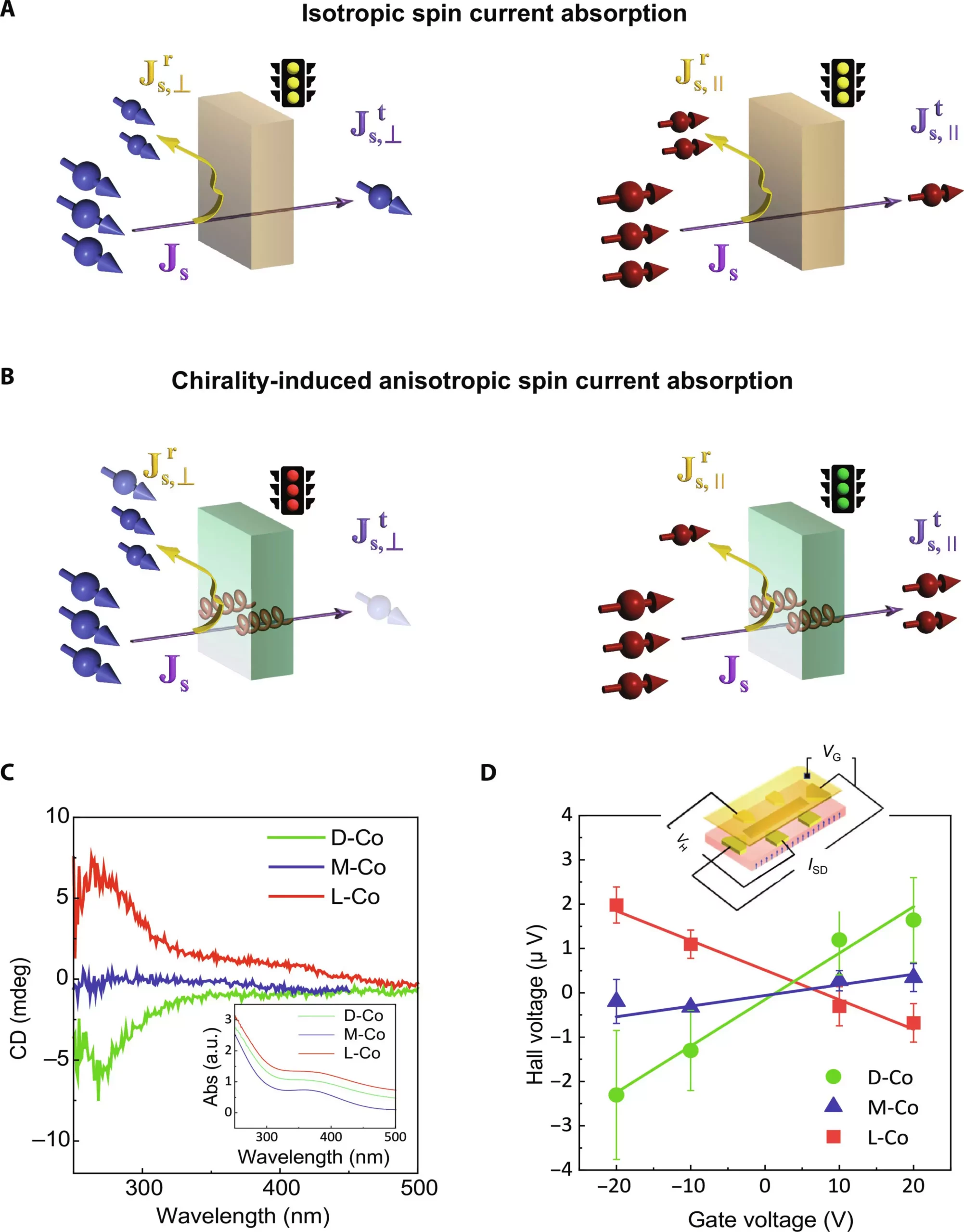Spintronics is a fascinating field that focuses on utilizing the spin of electrons to create current and transfer information through electronic devices. Recent research conducted by North Carolina State University and the University of Pittsburgh sheds light on how the spin information of an electron, known as a pure spin current, moves through chiral materials. The study revealed that the direction in which spins are injected into chiral materials significantly influences their ability to pass through them, opening up new possibilities for energy-efficient spintronic devices for data storage, communication, and computing.
Chiral materials, which are unable to be superimposed on their mirror image, play a crucial role in controlling the direction of spin within the material. Researchers have traditionally believed that the chirality, or ‘handedness,’ of a material is paramount in determining how spin moves through it. However, the recent study challenges this notion by demonstrating that the absorption of spin current in chiral materials strongly depends on the angle between the spin polarization and the chiral axis. This finding highlights the importance of the injection direction of pure spin in determining its ability to pass through the material.
The research team employed two different methods – microwave particle excitation and ultrafast laser heating – to inject pure spin into selected chiral materials. Both approaches yielded the same conclusion, emphasizing the consistency of the results. By studying two chiral cobalt oxide thin films with different chirality, the researchers observed a drastic improvement in spin absorption when the spin was aligned either parallel or anti-parallel to the chiral axis. In contrast, when the spin was aligned perpendicular to the chiral axis, it did not travel through the material. This 3000% increase in spin absorption underscores the potential of chiral materials as gateways for electronic devices.
The findings of this study, published in Science Advances, have significant implications for the field of spintronics. By uncovering the intricate relationship between spin direction and chiral materials, the research team has opened up new avenues for exploration. The discovery that spin can only pass through chiral materials in specific directions could lead to the development of tailored chiral gateways in electronic devices, enhancing their efficiency and functionality. As researchers delve deeper into the complexities of chiral materials and spin behavior, exciting new possibilities are sure to emerge.
The study on the impact of spin information direction on chiral materials in spintronics represents a significant advancement in our understanding of spin behavior and its interaction with chiral solids. By elucidating the role of injection direction in spin absorption, the research paves the way for innovative applications in the design of energy-efficient spintronic devices. Continued exploration of chiral materials and their unique properties promises to revolutionize the field of spintronics and drive future advancements in electronic technology.



Leave a Reply